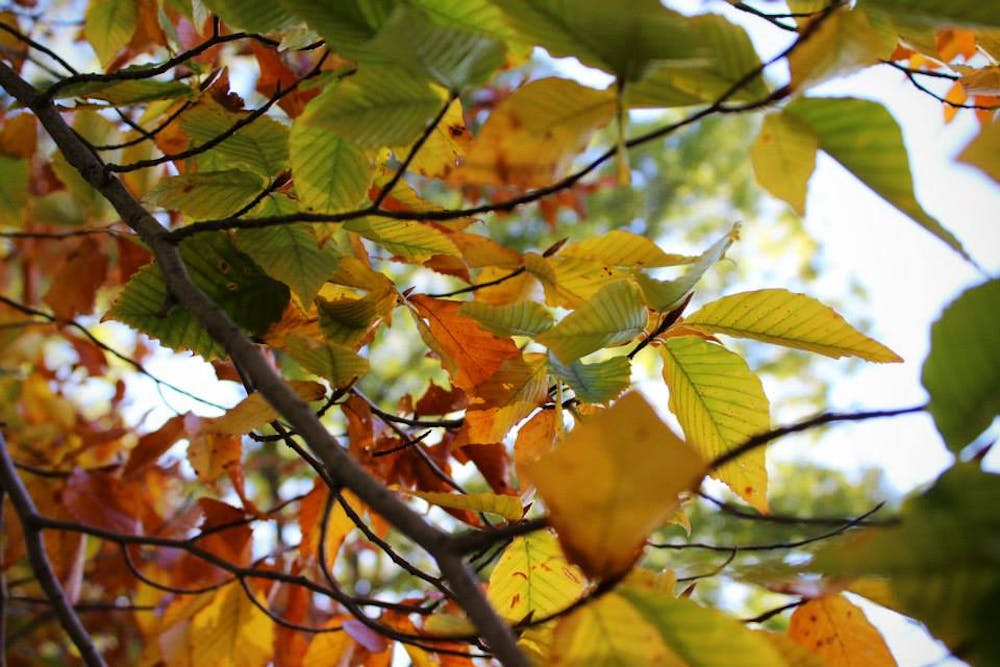
This past summer, Miami University faculty members teamed up for a six-week fellowship with four student artists and three student scientists to bring science to the community using various art mediums. Through the collaboration, a potentially transformative idea was born: showing factual, statistical material in a way that relates to the public.
In fact, Transforming Nature, the title of the fellowship, is a play on words to highlight the importance of explaining science differently, according to Tyler Hoskins, a doctoral candidate studying ecology, evolution and environmental biology.
“The scientists do studies pertaining to the environment and conservation and the importance of nature,” Hoskins said. “The transforming part comes in because this is a potentially transforming idea, right? The idea of getting artists involved with communicating these messages to a broader audience.”
Hoskins spoke of the disconnect between the arts and sciences. People who are scientifically-oriented tend to think in terms of facts and numbers, whereas people who practice art think creatively.
In order to bring the two disciplines together, the members involved split into three different teams composed of scientists and artists and led by a faculty member. One team focused on crop diversity, another watershed health and the final studied the effects of common pesticides.
Each team had to develop a way to explain the science behind each focus area in a manner relatable to the general public. Crop diversity created original prints and visual art, the watershed team filmed a video, and the pesticide group made a booklet with scientific information alongside poetry relating to the science.
The projects, displayed at the Oxford Community Arts Center Nov. 14 through Dec. 5, signify to their creators not only accomplishment, but perhaps a breakthrough in the mindsets of artists and scientists, Andrea Christman, a senior individualized studies major and environmental sustainability co-major who was part of the watershed team, said.
“They’re going to change how people think,” Christman said.
She said she did not realize the challenges she would be faced with during the six weeks she spent in Oxford working on Transforming Nature.
“I learned that the conversation is a lot harder than I thought it was,” Christman said.
As someone passionate about taking care of the environment, Christman had always advocated activism fueled by her opinions. She realized in certain disciplines, especially journalism where writers must remain unbiased, activism is not an option.
Hoskins, too, found aspects of the fellowship more difficult than imagined. He thought he would tell the artists what to portray and they would just do it, but found it was not so simple. It would take work to mesh the creative with the scientific in a manner pleasing to a wide variety of people.
“I definitely learned a lot about what can work in that dynamic and what can’t and I’m definitely excited about the possibility of future collaborations with artists given the things I’ve learned about what works and what doesn’t,” Hoskins said.
Hoskins, whose microscopic photo of a male frog with both male and female genitalia due to pesticides appears on the cover of the booklets he and his pesticide effects team members created, thought like a scientist. He wanted to show the world his graphs and statistics, but did not know how.
“Historically, scientists have been really bad at communicating our ideas to a broader audience of non-nerds,” Hoskins said, shaking his head.
He soon learned handing the artists tables and graphs with facts was not going to cut it. The artists wanted to formulate their own ways of communicating the information.
Christman seconded Hoskins thought, “The science is concrete and the nature of an artist – haha, the nature – is to be not concrete in your self-expression. That’s where it was tricky.”
Richard Moore, an associate professor of biology, was part of the team studying crop diversity. He said he is pleased with the outcome of the projects and hopes the fellowship laid the groundwork for establishing other, similar projects with collaboration between students and faculty in different disciplines.
“I was really pleased at just the quality and types of products that were produced. I really do feel like none of these things could have been made without these collaborations,” Moore said.
The projects developed by student and faculty scientists and artists will be displayed throughout the day during business hours at the Oxford Community Arts Center through Dec. 5. The exhibit is free and open to the public.
Transforming Nature

